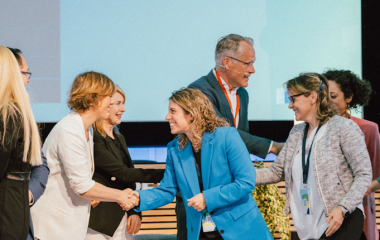
Photo: Pixabay
It is estimated that more than 30% of households in South-Eastern Europe (SEE) live in energy poverty. The REACH project implemented by NGOs from four countries in SEE provides EU and SEE decision-makers with policy recommendations and empowers households to save energy.
While between 10% and 25% of EU citizens live in energy poverty, the number is higher in SEE. It is estimated that more than 30% of households in the region struggle to satisfy basic energy needs.
The problem revealed by winter temperatures is due to the cultural, climatic and political characteristics of SEE. On the other hand, it is less defined, monitored or tackled in SEE than in Western Europe as there is little political interest in the issue of energy poverty, reads a press release published by Society for Sustainable Development Design (DOOR), one of the NGOs engaged in the implementation of the REACH project.
Highly inefficient dwellings, inadequate energy services and overall bad living conditions are identified as the main challenges SEE citizens face. In addition, they are not aware of the ways to use energy efficiently, which leads to the increase in consumption and higher energy bills.
Recognising and defining the problem and agreeing on monitoring indicators are the measures proposed as the key step in tackling energy poverty. The next step is to integrate energy poverty into national energy efficiency and social care programmes which should be carefully designed to be available to those in need.
Apart from taking low-cost energy efficiency measures, other ways of tackling energy poverty should also include the replacement of inefficient household appliances and heating systems, different levels of retrofitting buildings and subsidies which are suitable for vulnerable households. State-owned social housing should also be renovated thus improving the housing conditions.
Financial support, such as reducing energy bills, should be used as a measure after all cost-effective energy efficiency options have been implemented, according to the REACH project.
It is also suggested that planning and implementation of energy poverty measures should be approached in a cross-sectoral manner, involving a wide range of stakeholders in the process by creating links between the social, energy, health and environmental sectors. It is also important to work on aligning energy and social policies and to link energy poverty policies to a wider array of policies, such as employment, housing or pension policies. Finally, governments need to ensure the sustainability of the energy poverty policies and measures by transferring the responsibility of addressing the problem from local actors and NGOs to their own domain.
As the recently proposed Winter Energy Package (“Clean Energy for All Europeans” proposal) works towards addressing energy poverty at the EU level, the recommendations of the REACH project on the specifics of SEE must be considered by the EU decision-makers to ensure that these specifics are adequately covered by EU legislation.
The REACH project has been implemented in Bulgaria, Macedonia, Slovenia and Croatia. It is funded by Intelligent Energy Europe, a programme launched in 2003 by the European Commission with the goal to help the organisations willing to improve energy sustainability.


















Be the first one to comment on this article.